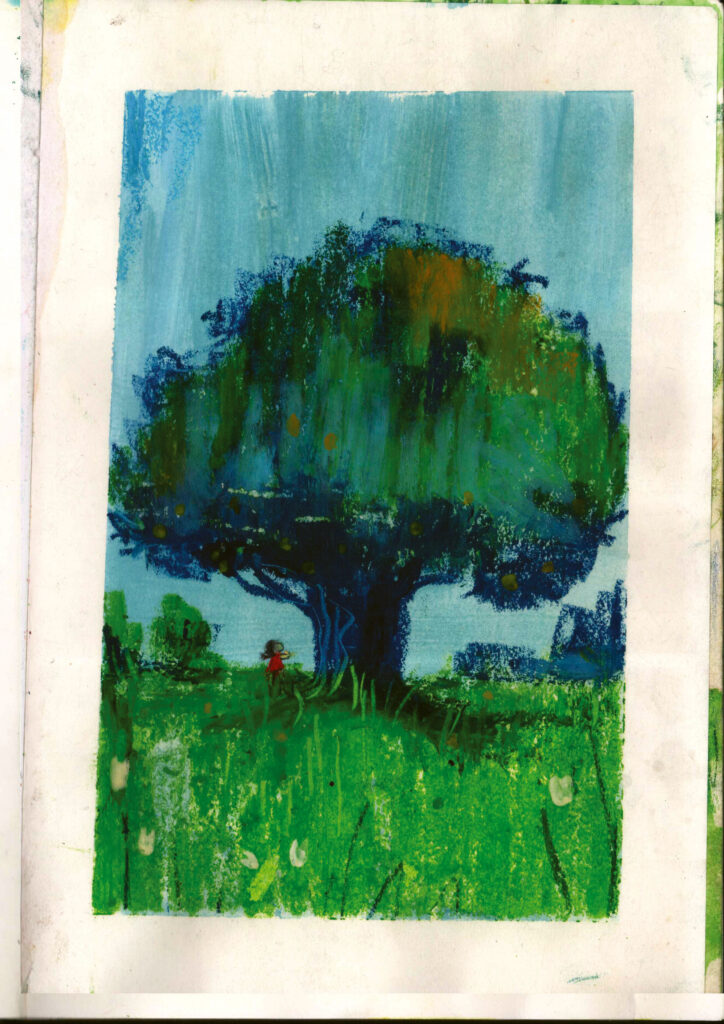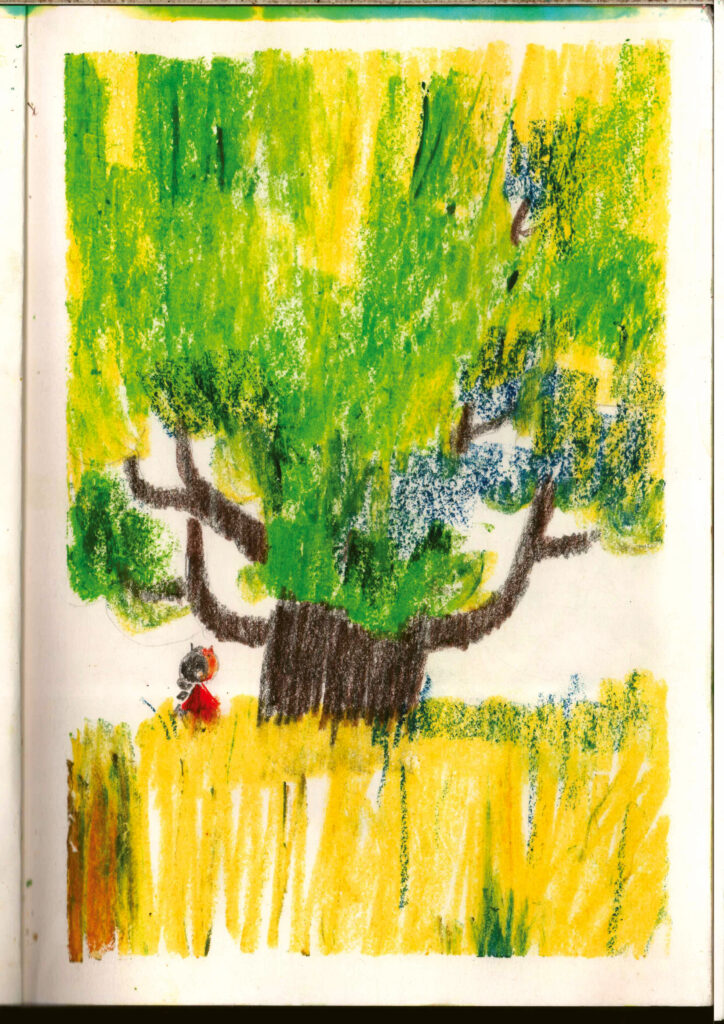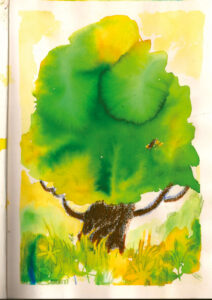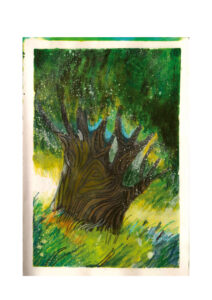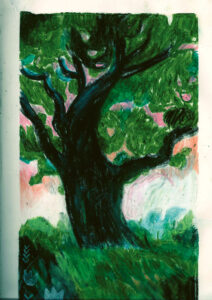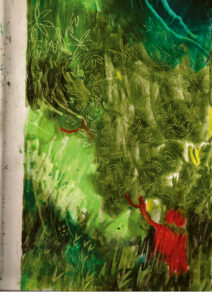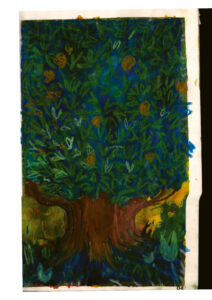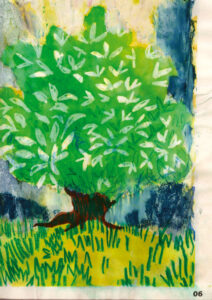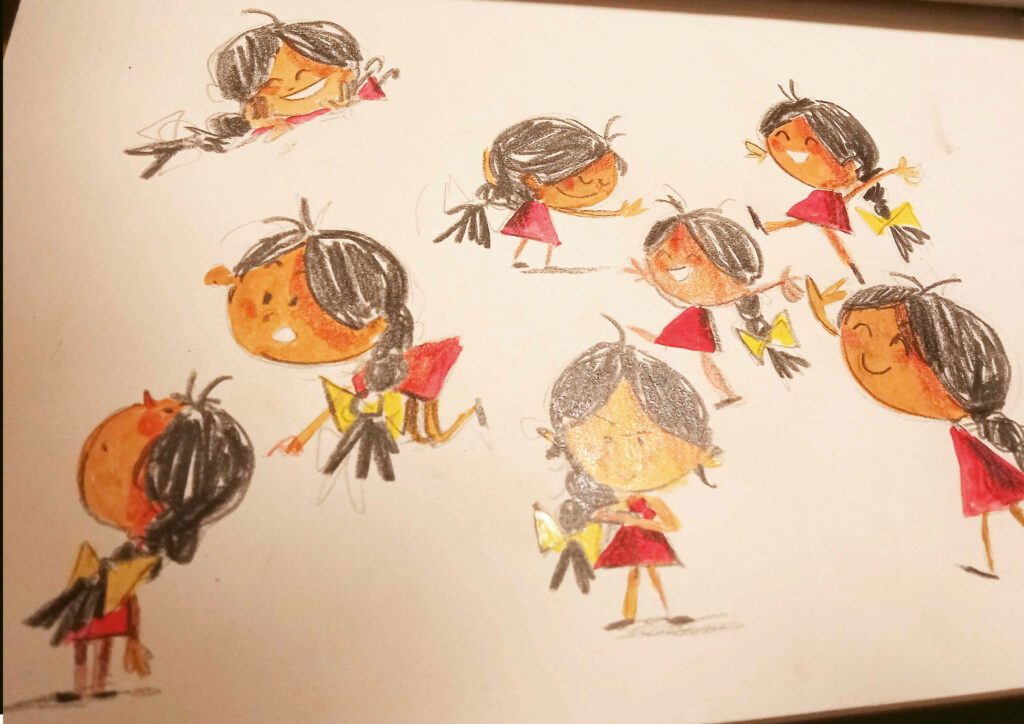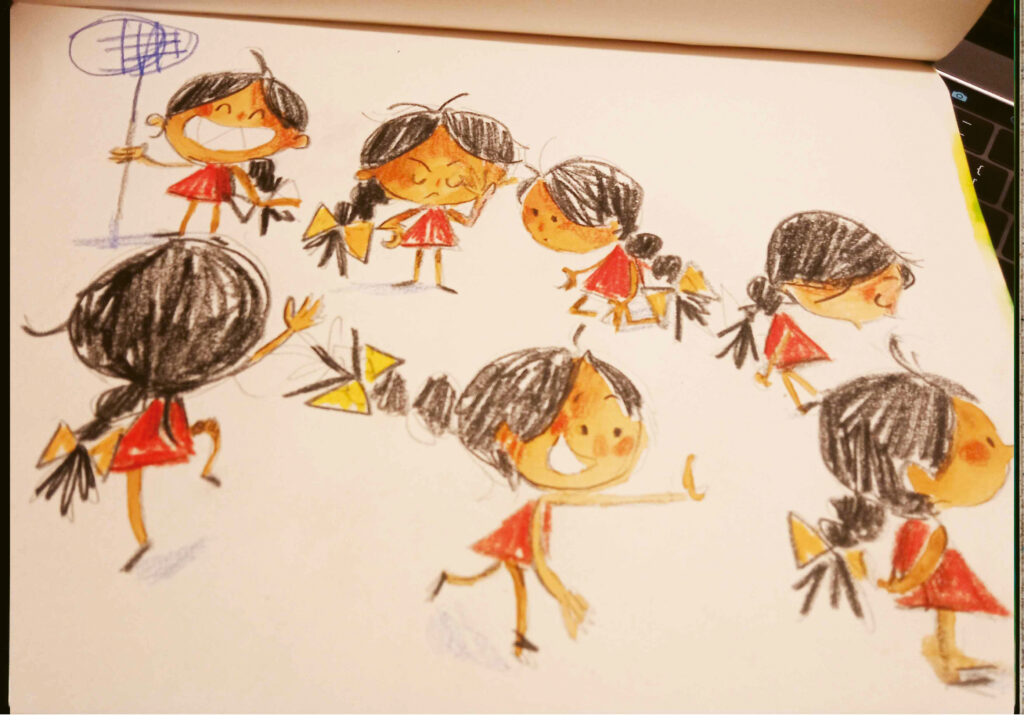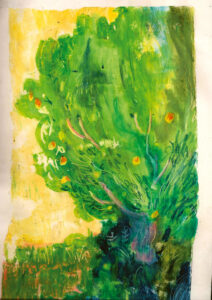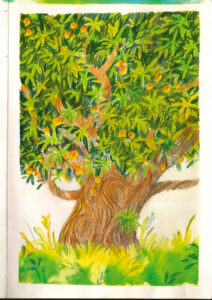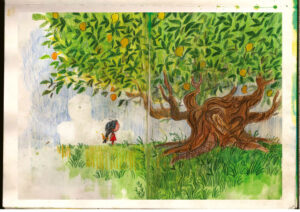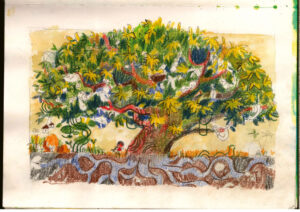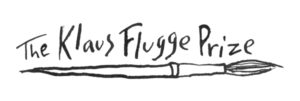
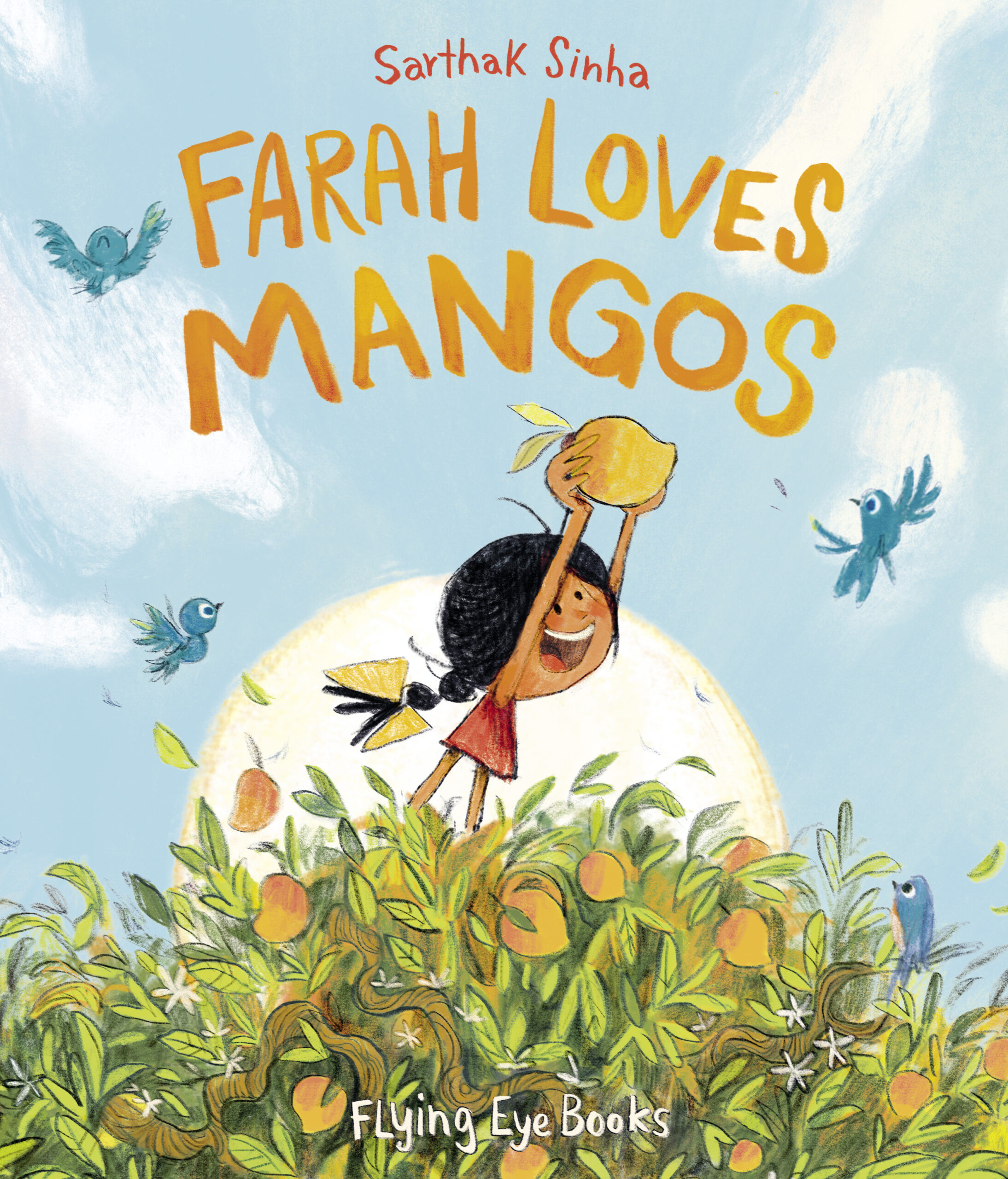
Farah Loves Mangos by Sarthak Sinha
Farah Loves Mangos, by Sarthak Sinha is one of the six books on the shortlist for the 2024 Klaus Flugge Prize.
Farah loves the mangos that grow on the tree in her grandpa’s garden but this year, no mangos grow. Farah is cross, until her grandpa shows her all sorts of other treats the tree contains. A sweet, funny story, say the judges, very well drawn and paced.
Former Klaus Flugge Prize judge, Senior Lecturer in Education: Primary English and Children's Literature, Mat Tobin interviewed Sarthak about the book.
Sarthak, can you share a bit about your journey into illustration and what inspired you to create Farah Loves Mangos? How have your experiences in different environments, from the tropical rainforests to the French Alps, influenced your artistic style?
I have loved scribbling and drawing ever since I could consciously hold a pencil and I believe I was stubborn to not give that up. While pursuing product design for my undergrad, I started to realise that drawing came first for me and that design was secondary. So I started to draw more and that was reflected in my designs and the process.
I would always carry a diary to scribble in and by the time I graduated I had so many of them that they became my way into a respected comic studio in India. And that’s how I found illustration. Prior to that I didn’t know you could earn by drawing what you loved 😛
The story of Farah was actually inspired by the tree. At the time, I was also thinking about how we use things; about how we live in a world that cares so much about the end purpose of something, and when the purpose is met, the perceived value of the said being, object or situation diminishes. I felt this way of thinking is damaging. So I wanted to work on a story that talked about meaning, its absence and how we can see beyond.
I feel at ease in nature. Drawing things that I see, sculpting silly twig installations, collecting leaves and so on. The palettes and compositions are gorgeous always. And their silence allows for them to be observed without pressure. It’s fast and slow.
Unsurprisingly, I was lured by the lush greens and clouds when I was in the tropics, and I guess that is reflected in my sketches. While I was in the Himalayas, the high clouds painted the landscape with changing shadows and silhouettes, and I would try to catch these before they disappeared. Observing these bare, barren mountains I felt I could understand movement.
I have just spent eight months in the Alps, so I can’t wait to see where they take me. The winter light here is very musical.
Your love for nature and the natural world is evident in your work. How do you integrate your passion for the natural world, including elements like poisonous plants, jungles, and mountains, into your illustrations for Farah Loves Mangos?
I am glad you think so! And though Farah feels tropical, it’s still a cultivated mango tree. I would have loved for it to be a massive wild mango tree so I would have more room to show all the chaos I wanted. But maybe that’s another story.
I enjoy drawing leaves and foliage, and Farah Loves Mangos had me drawing more than a hundred trees in the beginning. I think I enjoyed that part the most, just stepping out in my hometown with pencils and pastels and sitting with trees and drawing them. I guess we see a bit of those trees in the final art.
Farah and her relationship with her grandfather’s mango tree is at the heart of the story. Can you discuss how you developed these characters and the setting to reflect their bond and the cultural significance of mango trees?
For me the grandfather and the tree are synonymous. Both, old and wise. Both in some way considered obsolete by the fast world we live in. Putting Farah in the picture enabled me to show the relation and reaction of a child growing up with this notion.
Also grandparents are always treasures for children. So I wanted to nurture a connection that reflects the age old joy and innocence of this relationship; the passing on of stories and lessons. I personally learnt a lot from my grandfather and continue to learn from nature.
It is a mango tree, because I love mangos and mangos are also tied to the cultural identity of my hometown in India, known for this glorious, scented produce. It happens over a month-long stretch in a year so it’s highly anticipated.
I would love for the story to be made available in native languages sometime.
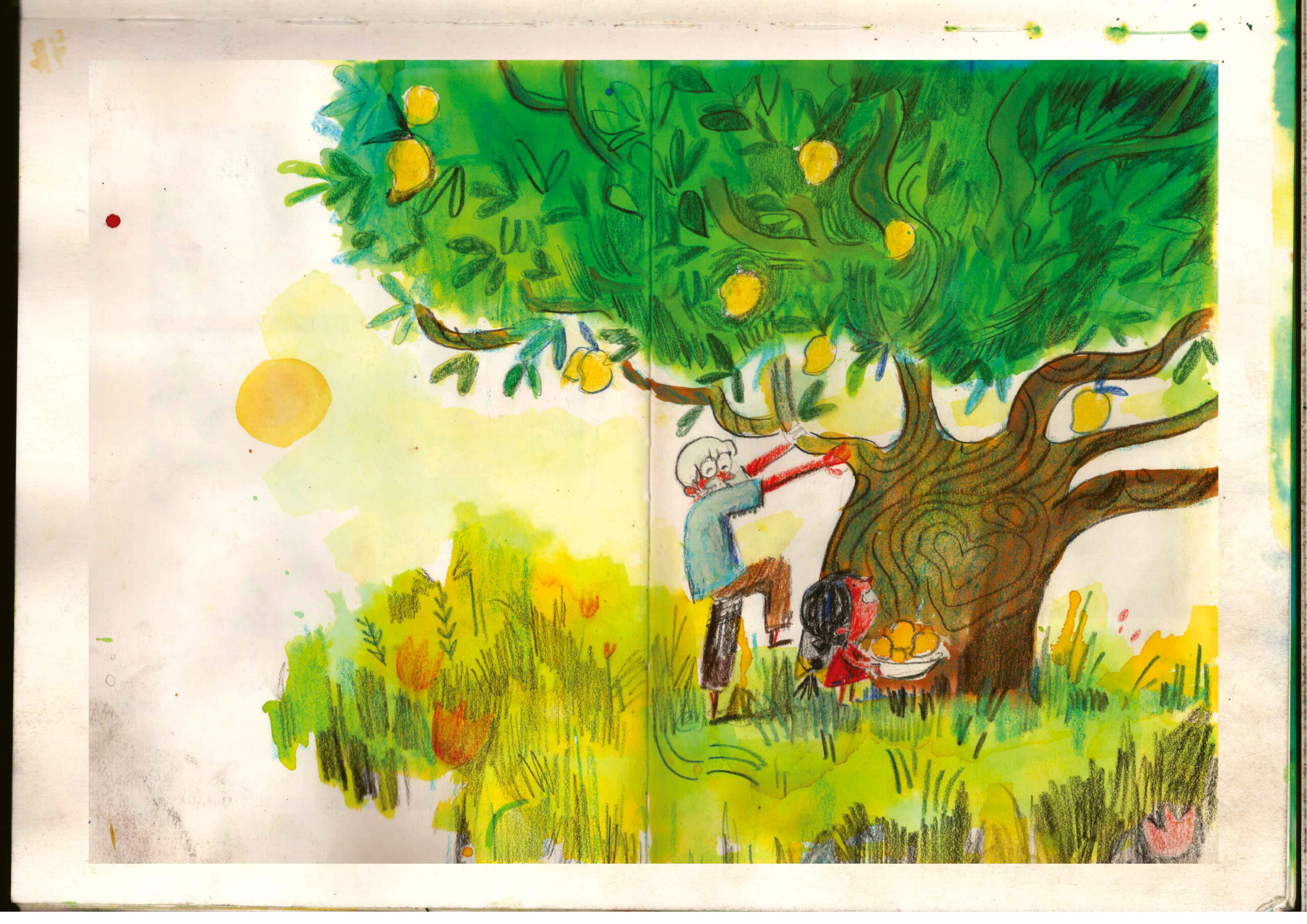
Can you describe the techniques and mediums you used in illustrating Farah Loves Mangos? What are some challenges you faced during the illustration process and how did you overcome them?
I experimented drawing trees in various media and sizes, and explored various techniques and was very excited realising that most of the book would be completed on the road during two months traveling in India. To keep it consistent and cohesive, I decided to paint all the backgrounds and characters separately using inks and watercolours and got them scanned to access them digitally wherever I wanted.
Certain spreads were created entirely on the journey. I used pencil colours for details and reworked some on tablet. I think the only challenge for me was to decide what visual path to take making the book. At first, I wanted the tree to be way more abstract and impressionistic. To make it comprehensible I was advised to define it further and make the leaves visible. I could have also gone exploring trees for over a year, but thankfully I had Harriet and Lilly at Flying Eye Books to direct me.
The illustrations in Farah Loves Mangos are full of movement and emotion. How do you use colour and shape to convey Farah's emotions and the overall mood of the story? Did you go through different colour iterations before landing on your final choice?
Surprisingly I knew exactly how Farah would look before I started the book. So I scribbled what I imagined. I wanted to keep her very simple and bright and give her a recognisable hairdo.
I like to sketch the characters in various emotions when I am ideating and that eventually becomes the character sheet. Also perhaps having taught kids before, I knew what emotions and features I wanted to express in Farah’s gestures.
How important was it for you to incorporate cultural elements into your book? Are there specific details or symbols in the illustrations that hold particular cultural significance?
Honestly, I didn’t think about it much. Whatever surfaced was during the process or by accident. Farah translates to happiness in Urdu. And I wanted her to find happiness through a new lens by the end.
What kind of research did you conduct while working on Farah Loves Mangos? Can you share any interesting discoveries or preliminary sketches that informed the final illustrations?
If eating various kinds of mangos counts as research, that was primarily my method. Because I was lucky enough to be in India while creating the book, I went to different mango sellers and farmers and bought rare and surreally delicious mangos on certain occasions. Thankfully I also got to attend a mango exhibit where more than 1000 varieties of mangos from the region were showcased and sold. Some of them made it to the end papers. I cycled across town and the countryside to draw the trees and came back home to exploring different mediums.
How was your collaboration with the editor and art director at Flying Eye Books? Did Harriet and Lilly’s feedback influence any changes in the illustrations or narrative of the book?
I am immensely grateful to Harriet, my editor. Her suggestions and insights truly helped me mould an effective narrative arc. Lilly’s confidence in my abilities gave me the right direction when I felt a bit lost.
I originally wanted the art to be impressionistic, but we collectively felt that the story was so energetic and bright, that perhaps it would be best to stick to the current style. They are both very good listeners and I avidly wanted to learn from them which made for a beautiful crafting experience.
Is there a personal connection or a particular story from your life that inspired the narrative of Farah Loves Mangos? How do you hope young readers will connect with Farah’s story?
Yes, I miss my grandfather. Sometimes I find my father searching for things to do or give him purpose now he’s retired and finding it in gardening sometimes. Several conversations with a friend about seeking meaning and finding none or finding it in a different way from what was originally imagined helped too.
The book was also an attempt to help me realise and accept that not all things need to have a meaning or purpose; that just being is enough. And that life can be surprising.
I hope younglings enjoy the big spreads and feel the urge to explore their gardens and trees.
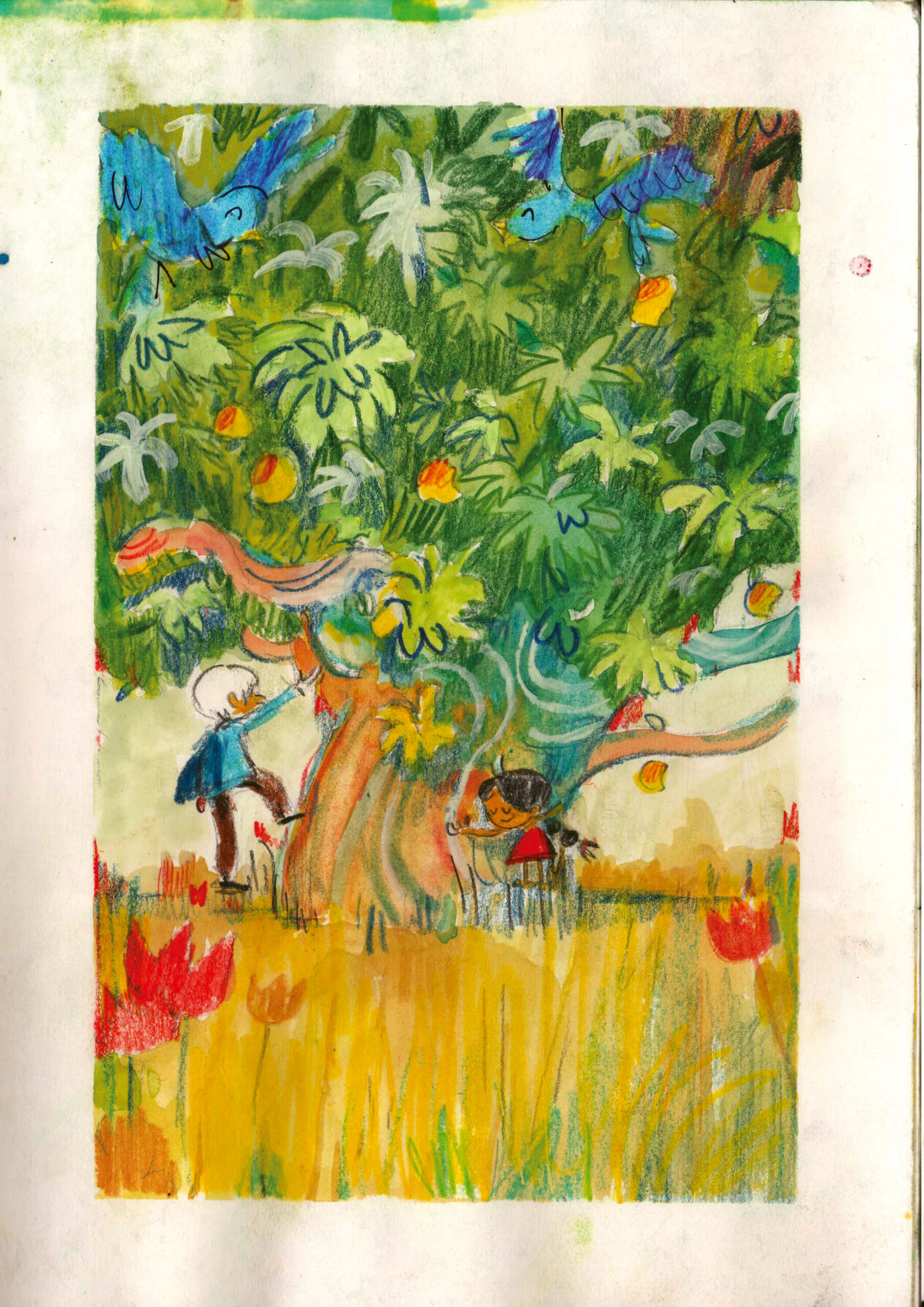
Are there any new projects you are currently working on that we can look forward to? How do you see your work evolving in the future?
Yes, I am working on three more manuscripts at the moment and illustrating two stories written by others. I am writing one story featuring a cat and another with a spider and sincerely hope we get to see them on the bookshelves soon.
Frankly I don’t know how my work will evolve. I’d like to make up stories with meaning and some that are just silly tales without a moral or conclusion and are just for laughs. I’d like to draw more and try for a better balance between words and pictures.
Farah Loves Mangos is published by Flying Eye Books, 978-1838742010, £7.99 pbk.
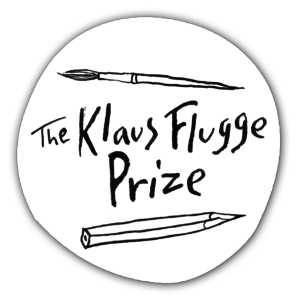
The Klaus Flugge Prize is funded personally by Klaus Flugge and run independently of Andersen Press.
Website maintenance & Copyright © 2024 Andersen Press. All Rights Reserved. Privacy & Cookie Policy.
